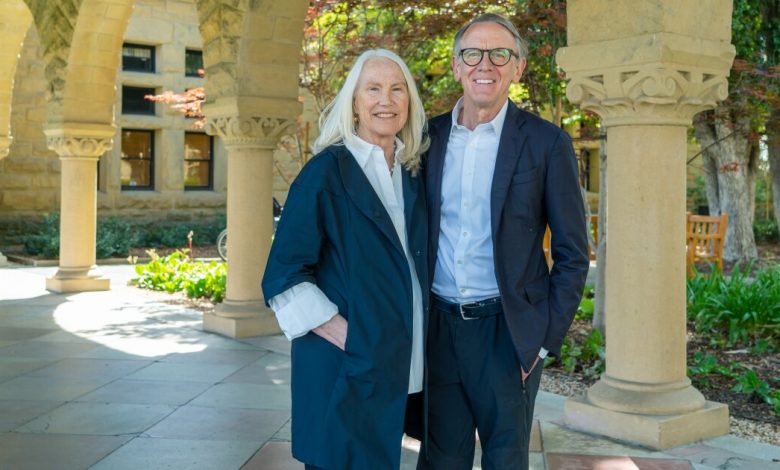Stanford Receives a $1.1-Billion Gift. How Does That Stack Up?

[ad_1]
Stanford University announced an eye-catching $1.1-billion gift on Wednesday for a new school focused on climate change and sustainability. The Doerr School of Sustainability will, Stanford leaders say, “accelerate solutions” to the climate crisis.
The pledge came from the venture capitalist John Doerr and his wife, Ann. It’s not the largest single donation to an American university — that title goes to Michael R. Bloomberg’s $1.8-billion gift to the Johns Hopkins University, in 2018 — but it’s moved into second on the all-time list.
According to a Chronicle database, Stanford has received eight donations of $100 million or more since 2001.
In a statement released by the university, the Doerrs touted Stanford as the ideal recipient of their donation. “With a deep track record in groundbreaking scholarship and impact, and a critical mass of subject experts and innovators, Stanford is perfectly positioned to make a measurable difference in climate and sustainability challenges,” they said.
Major donors often target elite colleges like Stanford in hopes of making the biggest possible impact. Some observers, though, question the strategy of showering the richest universities in the world with more money.
Here are a few comparisons to help put the Stanford donation in context.
How does it compare to other recent gifts to higher ed?
- $1 billion more than the largest grant to a community college, a $100-million outlay in 2020 to the California Community Colleges by the Jay Pritzker Foundation.
- $1.06 billion more than the billionaire tech investor Robert F. Smith’s $40-million gift to Morehouse College, the private historically Black college in Atlanta, to pay off student loans for members of the Class of 2019.
- $1.07 billion more than the largest donation, $30 million, to the City University of New York’s Bernard M. Baruch College, which ranked first on CollegeNET’s latest ranking of institutions based on how much they increase their graduates’ social mobility.
- $600 million more than Harvard University’s largest donation: a $500-million pledge from Priscilla Chan and Mark Zuckerberg in 2021.
What could $1.1 billion pay for?
- In-state tuition costs for all 46,523 students at Miami Dade College, the nation’s largest community college, to attend full time for a year — with about $900 million left over. (About 98 percent of its students are Florida residents.)
- Tuition and fees for all 11,328 undergraduates at North Carolina A&T State University, the nation’s largest historically Black college, to attend full time for four years — with more than $600 million left over.
- Two years of in-state tuition and a monthly stipend of more than $700 for the 53,000 students in the California State University system who experienced homelessness in 2018.
- Tuition for half of Wyoming’s adult population to attend the University of Wyoming for a year.
- State funding in 2021-22 for the entire 26-campus University of Wisconsin system.
- The base operating budget for the entire seven-campus University of Maine system.
- The entire federal Work-Study Program.
- Twenty times the number of awards doled out by the federal Child Care Access Means Parents in School Program, which supports student parents, in the 2021 fiscal year.
[ad_2]
Source link






